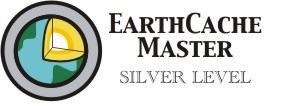
It was a real blessing is to be able to spend time with other ex-pat friends recently. We gathered in a house not to far from the new cache I placed in Pucallpa, Peru. Pucallpa is a jungle city of about 400,000 population situated on the Ucayali River. The logging industry is probably the biggest business in this region. For much of the year this region swelters in heat and humidity but is blessed with all the beauty of the rain forest. Pucallpa is a Quechua name meaning literally "Red Earth". A sign as you come out of the airport into town welcomes you to the "Tierra Roja". More and more streets are paved now but most are still red dirt (or mud if it is raining). The major form of transportation is by moto-taxi. The streets are full of moto-taxis buzzing (a rather loud buzzing when there are hundreds of them) up and down with their passengers. They out number cars 15:1 in this town and are the major mode of in-town transportation. I'd like to see the day when tourist geocachers in Pucallpa are running from geocache to geocache in moto-taxis. I'm convinced that those tourist who happen to be geocachers planning a trip to the Peruvian jungle and trying to decide between one location and another will likely opt for the location with the most geocaches. I placed the new cache near the airport and along a well transited road. It's called The Banana Man (GC2JR26) and the picture tells the story. I've spent two mornings walking the streets around this house looking for a decent place to put a cache out but found very few. Most locations are too full of muggles to place a cache and expect it to survive the week. The Banana Man has a good chance of survival if the geocacher is careful. The cache is not right in the middle of all that traffic but is in a more cacher-friendly location within sight of the Banana Man. If you come to Peru let me encourage you to visit the Ucayali River area, nearby Yarinacocha (a beautiful lake) and check out a few caches in the area. Congratulations to Dav&Lin for the FTF!











